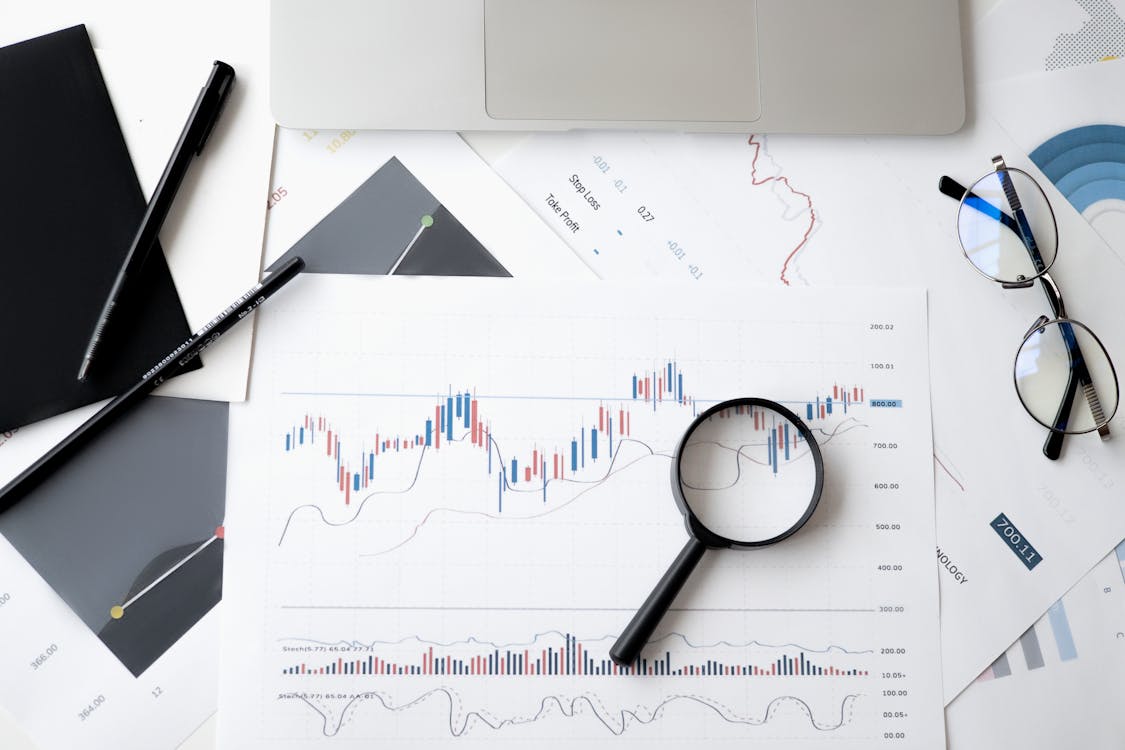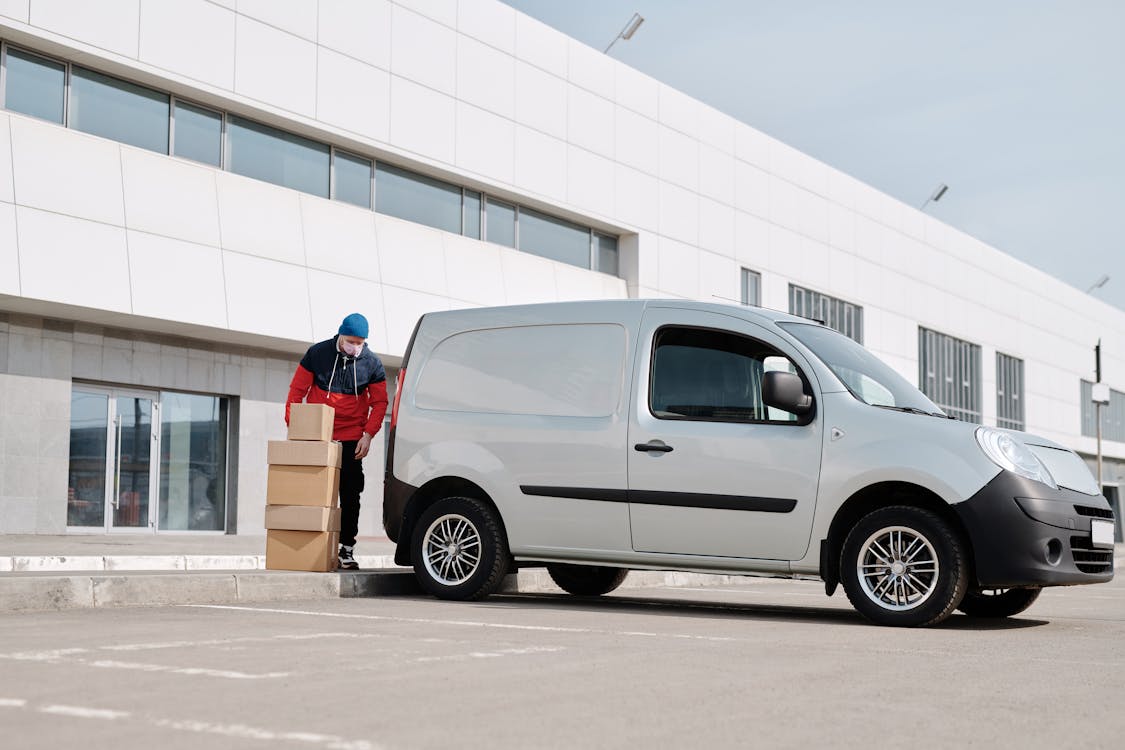The Ultimate eBay Pricing Strategy Guide: How to Price Items for Maximum Profit
You’ve sourced the perfect item, taken stunning photos, and written a compelling description. Now comes the most critical step: setting the price. Price it too high, and your listing will gather digital dust. Price it too low, and you're leaving hard-earned money on the table.
This is the classic eBay seller's dilemma. But what if pricing wasn't a guessing game? What if it was a science?
Welcome to your definitive guide. We’re going to break down everything you need to know to develop an eBay pricing strategy that doesn’t just sell your items—it maximizes your profit. Forget guesswork. It’s time to get strategic.
Why a Smart eBay Pricing Strategy is Your Most Powerful Selling Tool
Thinking of a price as just a number is the first mistake many sellers make. Your price is a powerful signal that influences everything from your visibility in search results to a buyer's decision to trust you and make a purchase.

Beyond Just a Number: The Impact of Price on Your Listing
- eBay's Search Algorithm: eBay’s search engine, Cassini, wants to show buyers items they are likely to purchase. Competitively priced items that align with market demand get a significant boost in visibility.
- Buyer Trust and Perceived Value: A price that is wildly out of line with the market—either too high or too low—can seem suspicious. A fair, well-researched price builds trust and tells the buyer you're a knowledgeable and professional seller.
- Quick Sale vs. Profitable Sale: Anyone can sell an item quickly by pricing it at rock bottom. The goal of a smart strategy isn't just to sell; it's to find the "sweet spot" where the item sells in a reasonable timeframe for the highest possible profit.
Increasing Sales Velocity and Improving Your Seller Metrics
In the world of eBay, success breeds success. "Sales velocity" refers to the speed and frequency at which your items sell.
Correctly priced items sell faster, which improves your sales velocity. eBay's algorithm sees this positive activity and rewards your account with better visibility across all your listings. This creates a powerful feedback loop: Good Pricing → Faster Sales → Better Seller Metrics → More Visibility → More Sales. This cycle is crucial for building a sustainable eBay business with healthy cash flow.
The Foundation of All Pricing: Mastering eBay Market Research
You cannot set a price in a vacuum. Pricing without research is just guessing, and guessing is a poor business strategy. Fortunately, eBay provides the exact tools you need to see what buyers are actually willing to pay.
The Gold Standard: How to Use eBay's "Sold & Completed Listings" Filter
This is the most important research skill you can learn on eBay. It shows you real-world, historical sales data for items just like yours, revealing the true market value.
Here's how to find this data:
- Go to eBay and search for your item as if you were a buyer. Be specific (e.g., "Sony WH-1000XM4 Wireless Headphones Black Used").
- On the search results page, scroll down the left-hand filter menu.
- Under the "Show only" section, check the box for "Sold Items" or "Completed Items."
You will now see a list of all listings for that item from the last 90 days. Prices shown in green are items that successfully sold. Prices in black or red are items that failed to sell. This data is pure gold. For example, if you see that your headphones have consistently sold for between $150 and $185 in used condition, you now have a realistic and profitable price range.
Sizing Up the Competition: Analyzing Active Listings
Next, uncheck the "Sold Items" box to see your current competition. This helps you identify the "floor" (the lowest current price) and the "ceiling" (the highest current price). Ask yourself: "Why would a buyer choose my listing over all the others?"
If your price is the same as ten other sellers, you need to stand out. Differentiate your listing with:
- Superior, well-lit photos from multiple angles.
- A more detailed and honest description.
- A better seller reputation (e.g., a Top Rated Seller badge and high feedback score).
- Faster or cheaper shipping options.
Considering Item Condition, Rarity, and Inclusions
Not all items are created equal. You must adjust your price based on these critical factors:
- Condition: An item that is "New with tags" will command a much higher price than one that is "Used" with minor wear, which in turn is worth more than one sold "For parts or not working." Be honest and price accordingly.
- Inclusions: Does your item include its original box, manual, or accessories? A video game console with its original packaging and two controllers will fetch a higher price than the console alone.
- Rarity: For unique, vintage, or collectible items, direct comparisons are tough. In this case, search for similar items in the same category to get a feel for the market. An auction-style listing can also be a great way to let the market determine the price for a rare item.
Choosing Your Core Pricing Model: Auction vs. Fixed Price (Buy It Now)
Every eBay listing forces you to make a fundamental choice: will you run an auction or offer a fixed price? The right choice depends entirely on the item you're selling.
When to Use an Auction-Style Listing for Maximum Impact
An auction is a high-engagement format where buyers bid against each other, creating urgency and excitement.
- Ideal for: Rare collectibles, one-of-a-kind items, products with extremely high demand (like a newly released gadget), or anything where the market value is unknown or highly variable.
- The Strategy: Set a very low starting bid (e.g., $0.99 or $9.99) to attract a high number of watchers and initial bidders. This creates social proof and can spark a "bidding war" in the final minutes, often driving the price higher than a fixed price.
- The Risk: There's always a chance the item sells for too little. You can use a "reserve price" (a hidden minimum), but this often scares away bidders. A low starting bid is usually the better strategy for items you know are in demand.
When to Use a Fixed-Price (Buy It Now) Listing for Stability
This is the most common format on eBay, functioning like a standard retail listing where the price is set.
- Ideal for: Common items with a well-established market value (e.g., a specific iPhone model), items you have in multiple quantities, or for any seller who wants predictable, stable income.
- The Strategy: Your goal is to be competitive. Use your market research from the "Sold Listings" filter to price your item in line with, or slightly better than, other "Buy It Now" sellers, factoring in your listing's quality and your seller reputation.
The Hybrid Approach: Using Auction with a "Buy It Now" Option
This strategy gives buyers the best of both worlds. They can either bid in the auction or end it immediately by paying the "Buy It Now" price. This appeals to the impatient buyer who wants the item now and is willing to pay a premium for it. The "Buy It Now" price disappears once the first bid is placed, so it rewards decisive buyers.
Don't Forget the Details: Factoring in Fees and Shipping
A common rookie mistake is forgetting that your list price isn't pure profit. To protect your margins, you must understand and account for all your costs before you list.

A Seller's Guide to Understanding eBay's Fee Structure
eBay's fees can be complex, but here are the main ones to know:
- Insertion Fee: A small fee for creating the listing (though most sellers get hundreds of free listings per month).
- Final Value Fee (FVF): This is the most significant fee. It's a percentage of the total sale amount, which includes the item price, shipping, and any handling charges. This is critical—you are charged a fee on your shipping, too. The percentage varies by category but is typically around 13.25% for most common items.
- Optional Fees: Fees for listing upgrades like adding a subtitle, scheduling a listing, or using Promoted Listings.
An eBay Store subscription can lower these fees and provide other benefits, making it a worthwhile investment for high-volume sellers.
Calculating Your True Profit Margin Before You List
Always calculate your potential profit before you create the listing. Use this simple formula:
Profit = (Sale Price + Shipping Charged) - (Item Cost + eBay Fees + Actual Shipping Cost)
To make this easier, search for a free "eBay fee calculator" online. These tools do the math for you and show you exactly what you'll pocket from a sale.
Strategic Shipping Pricing: Free vs. Calculated vs. Flat-Rate
Your shipping price is an integral part of your overall pricing strategy.
- Free Shipping: This is a powerful psychological incentive for buyers. It's never truly "free"—you simply bake the estimated shipping cost into your item's price. Listings with free shipping are also more likely to get the coveted "Fast 'N Free" badge, which boosts visibility.
- Calculated Shipping: This is the fairest and most accurate method. The buyer pays the exact shipping cost based on their location and the package's weight and dimensions. This is ideal for heavy, bulky, or irregularly shaped items where shipping costs vary widely.
- Flat-Rate Shipping: A simple compromise where you set one shipping price for all buyers in the country. This works best for items with predictable shipping costs, like a t-shirt, book, or video game.
Advanced Pricing Tactics to Outsmart the Competition
Once you've mastered the basics, use these pro-level tactics to gain a competitive edge and increase your sales.

The Power of "Or Best Offer": Engaging Buyers and Moving Inventory
Adding the "Best Offer" option to your Fixed-Price listings invites negotiation. It signals to buyers that you're open to a deal, which can turn a hesitant watcher into a paying customer. To save time, you can set automatic thresholds to instantly accept offers above a certain price or decline offers below another. It's also a fantastic way to clear out stale inventory without having to publicly drop the price.
Psychological Pricing: Why $29.99 Sells Better Than $30.00
It's a classic retail tactic for a reason. This is called "Charm Pricing" or the "Left-Digit Effect." Our brains perceive $29.99 as significantly cheaper than $30.00, even though it's only a one-cent difference. Applying this simple tactic to your prices can have a surprisingly powerful effect on conversion rates.
Driving Larger Sales with Volume Pricing and Order Discounts
Want to increase your average order value? Use eBay's built-in promotional tools:
- Volume Pricing: On multi-quantity listings, you can set up tiered discounts like "Buy 2, get 5% off" or "Buy 3 or more, get 10% off."
- Order Discounts: Encourage buyers to browse your store by offering promotions like "Spend $50, save 10% on your entire order."
Using Promoted Listings to Justify a Higher Price Point
Promoted Listings Standard is an advertising tool where you pay an extra fee (a percentage of the sale) only if the item sells through the ad. This gives your listing premium, top-of-page visibility. With this prime placement, you can often price your item slightly higher than non-promoted competitors and still win the sale due to increased exposure.
The Final Step: Monitoring, Adjusting, and Automating Your Strategy
Pricing is not a "set it and forget it" task. The market is dynamic, and your strategy must be, too.
When and How to Adjust Your Prices
Keep a close eye on your listing's performance. You can see Views and Watchers on your active listings page. If a listing has been active for a week with very few views, it's a strong sign your price is too high for the current market. As a rule of thumb, review any item that hasn't sold within 30 days. It's time to re-evaluate the price or the listing itself.
Handling Stale Inventory: The Art of the Strategic Price Drop
If an item is sitting for too long, you have several powerful options:
- Send Offer to Watchers: This is one of eBay's best features. You can send a private, discounted offer directly to everyone watching your item. This creates a sense of exclusivity and urgency.
- End and "Sell Similar": Instead of just lowering the price on an old listing, it's often better to end it and use the "Sell Similar" feature. This creates a fresh listing, which the eBay algorithm tends to give a temporary visibility boost.
Leveraging Tools for Smarter Pricing
For high-volume sellers, manually adjusting hundreds of listings is impossible. Consider third-party repricing software that can automatically adjust your prices based on rules you set. For everyone else, use eBay's own tools, but with a note of caution. eBay's pricing recommendations are a good starting point, but they should never replace your own thorough "Sold Listings" research.
Conclusion: Your Path to Becoming an eBay Pricing Pro
Developing the best eBay pricing strategy is the single most impactful skill you can learn to grow your business. It transforms selling from a game of chance into a predictable, profitable system.
Let's recap the core principles:
- Research is Non-Negotiable: Always start with the "Sold Listings" filter to find the true market value.
- Know Your Costs: Factor in your item cost, all eBay fees, and shipping to protect your profit margin on every sale.
- Choose the Right Model: Use Auctions for rare or high-demand items and Fixed-Price for stable, predictable sales.
- Be Willing to Adapt: Monitor your results, engage with buyers using "Best Offer," and don't be afraid to adjust your prices to meet market demand.
Pricing is not a chore; it's the control panel for your eBay success. By following this guide, you now have the roadmap to move from guessing to strategizing, putting you firmly in control of your profits.
